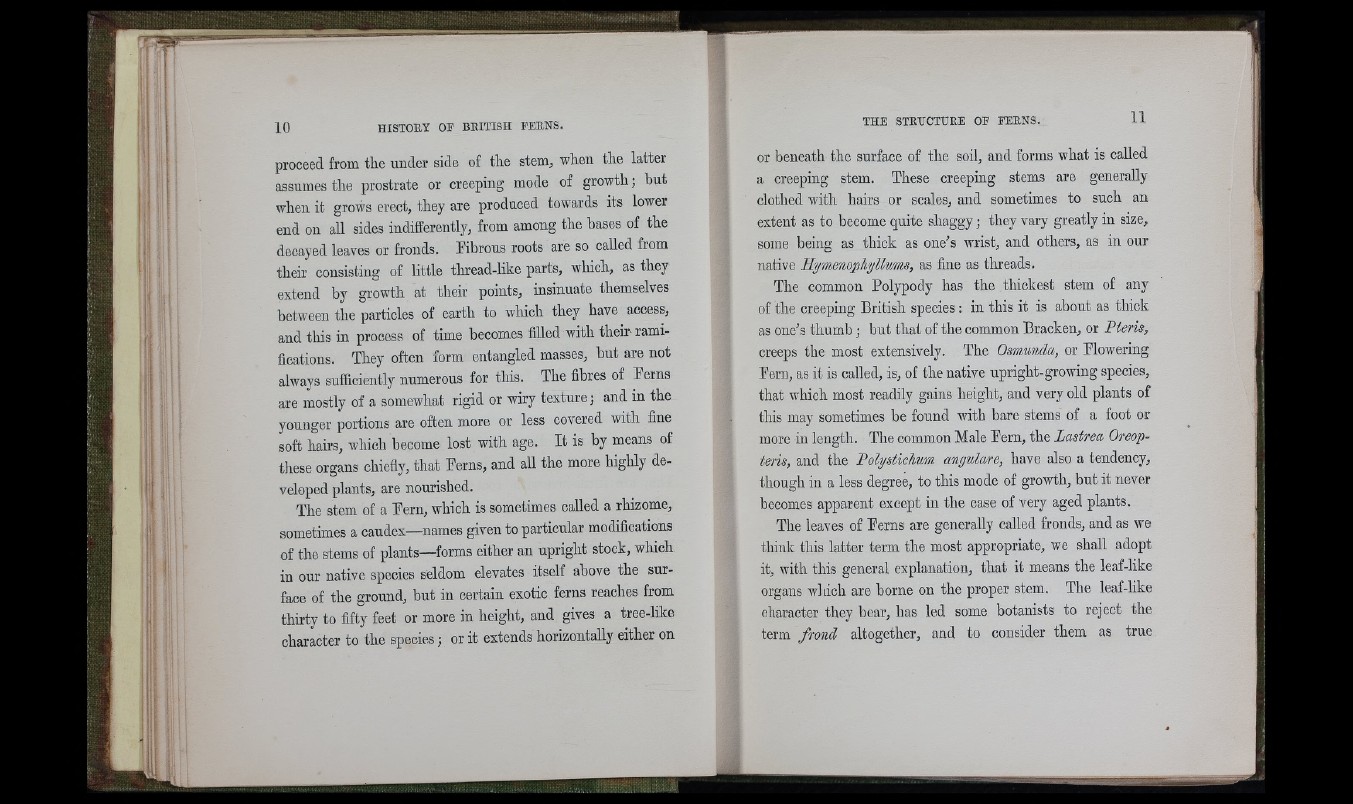
10 HISTOEY OF BRITISH FERNS.
proceed from the under side of the stem, when the latter
assumes the prostrate or creeping mode of growth; but
when it grows erect, they are produced towards its lower
end on all sides indifferently, from among the bases of the
decayed leaves or fronds. Pibrous roots are so called from
their consisting of little thread-like parts, which, as they
extend by growth at their points, insinuate themselves
between the particles of earth to which they have access,
and this in process of time becomes filled with theiu ramifications.
They often form entangled masses, hut are not
always sufficiently numerous for tliis. The fibres of Perns
are mostly of a somewhat rigid or wiry texture; and in the
younger portions are often more or less covered with fine
soft hairs, which become lost with age. It is by means of
these organs chiefly, that Perns, and all the more highly developed
plants, are nourished.
The stem of a Pern, which is sometimes called a rhizome,
sometimes a caudex—names given to particular modifications
of the stems of plants—forms either an upright stock, which
in our native species seldom elevates itself above the surface
of the ground, but in certain exotic ferns reaches from
thirty to fifty feet or more in height, and gives a tree-like
character to the species ; or it extends horizontally either on
or beneath the surface of the soil, and forms what is called
a creeping stem. These creeping stems are generally
clothed with hairs or scales, and sometimes to such an
extent as to become quite shaggy; they vary greatly in size,
some being as thick as one’s wrist, and others, as in our
native Kymenopliyllums, as fine as threads.
The common Polypody has the thickest stem of any
of the creeping British species: in this it is about as thick
as one’s thumb; but that of the common Bracken, or Bteris,
creeps the most extensively. The Osmunda, or Plowering
Pern, as it is called, is, of the native upright-growing species,
that which most readily gains height, and very old plants of
this may sometimes be found with bare stems of a foot or
more in length. The common Male Pern, the Lastrea Oreopteris,
and the Polystichum angulare, have also a tendency,
though in a less degree, to this mode of growth, but it never
becomes apparent except in the case of very aged plants.
The leaves of Perns are generally called fronds, and as we
think this latter term the most appropriate, we shall adopt
it, with this general explanation, that it means the leaf-like
organs which are borne on the proper stem. The leaf-like
character they bear, has led some botanists to reject the
term frond altogether, and to consider them as true